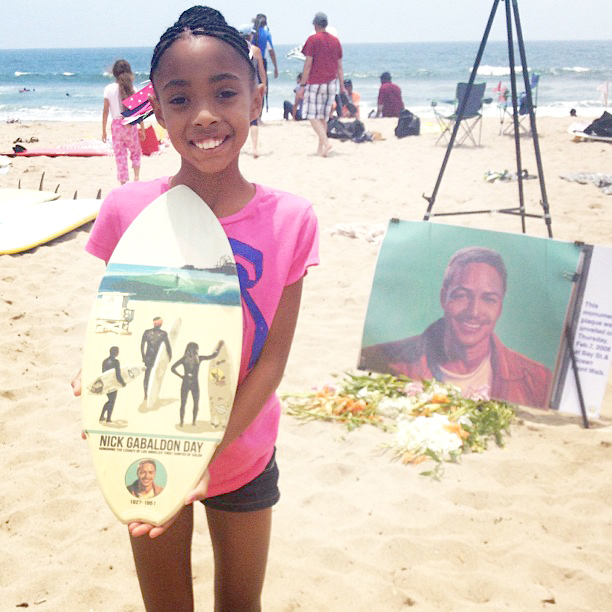Lessons From L.A. Beaches' Checkered Past
Programs director Meredith McCarthy says the shared history of L.A.’s beaches isn’t always black and white.
“History is messy.” That’s what local historian Alison Rose Jefferson told me when we started planning a day to honor Nick Gabaldón. By designating a day to commemorate Nick, we celebrate our shorelines and also recognize the struggle for equality of beach access. In the post-WWII years, Nick became the first documented surfer of color in the Santa Monica Bay. With our partners the Black Surfers Collective and SurfBus, we are again celebrating his passion and legacy on Saturday, June 14, at Bay Street beach in Santa Monica.
In honor of Nick, we are offering free surf lessons and beach exploration with Heal the Bay naturalists and docents from the Santa Monica Conservancy. In the afternoon, there will be free admission to our Aquarium at the Santa Monica Pier. No cleanups, just fun – especially for children visiting from underserved inland communities, many of whom have never even seen the ocean, let alone surfed it. We want people to understand how special Nick Gabaldón was and the incredible backstory of Bay Street.
Referred to by many whites as “the Inkwell,” Bay Street beach was a safe haven for local African American beachgoers during a time of de facto segregation. I told Alison I didn’t feel right mentioning “the Inkwell” on the flyer announcing Nick Gabaldón Day. “People need to know their history,” she said, and spoke of the importance of remembering places with ugly names—especially as our society continues to grapple with issues surrounding race and ethnicity.
As a young man of African American and Mexican American descent, Nick faced many challenges learning to surf in Jim Crow America, but none of them stopped him from getting into the water. Since he didn’t have access to a car for many years—and you just didn’t see a black man carrying a surfboard on a bus to Malibu in 1949—Nick would sometimes paddle the 12 miles to his favorite spot in the lineup at Surfrider. His grueling trek forces us to recognize how far we’ve come on our shorelines—and how far asea we were when we started. (Tragically, Nick died surfing the Malibu breaks he loved in 1951.)
After watching a documentary about Nick’s life called “12 Miles North: The Nick Gabaldón Story,” I was ready to jump on a board and join the paddle-out for Nick at our inaugural event last year. There was just one problem, though. I can’t surf. I am terrible at it. But by helping to organize Nick Gabaldón Day, I hope I’m doing my part to link people together in a meaningful way.
It’s time to face the messiness of our shared past and address the fact that 70% of African Americans can’t swim. I want to undo all that fear and ignorance that promulgates the misperception that the beach isn’t for everyone. The beach belongs to all of us, and I face the guilt and the ignorance with hope in my heart.
Please join us on June 14 to paddle out for Nick. Or, you can join me on the beach, where I’ll be standing and cheering.




